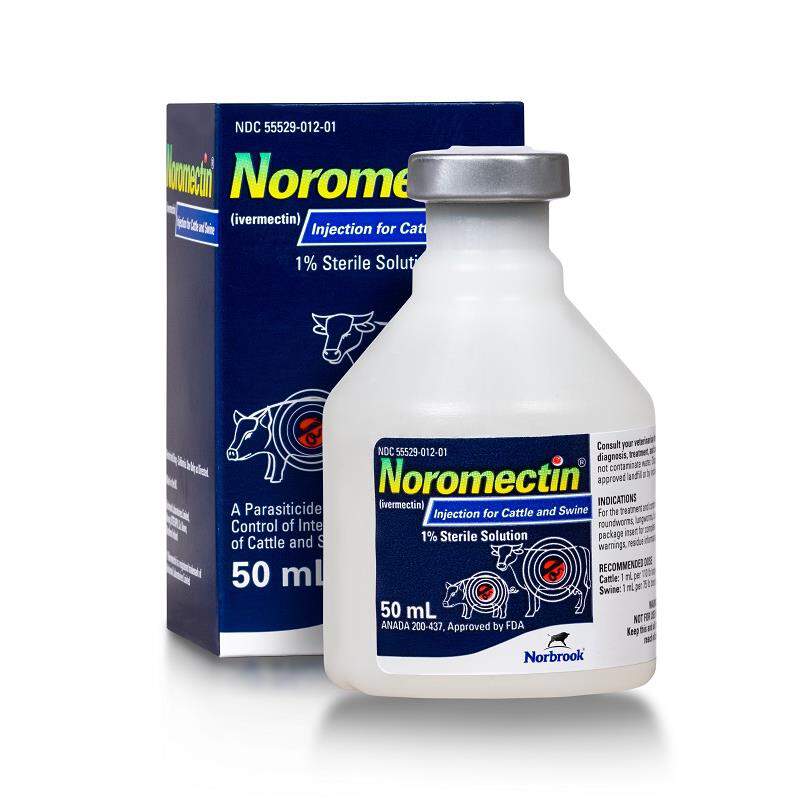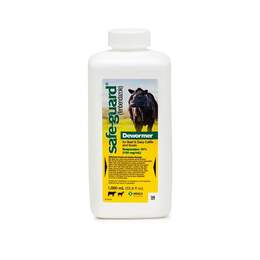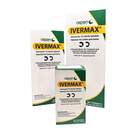Click on image to open expanded view
Item No.
50994
Noromectin (Ivermectin 1%) Injection for Cattle and Swine
AutoShip & Save 5%
Size:
Product Description
Noromectin Injection for Cattle and Swine is a powerful parasiticide that contains ivermectin (1%). This injectable medication is effective against a variety of harmful internal and external parasites, including gastrointestinal roundworms, lungworms, lice, mange mites, and grubs. It is available in low-volume single doses that are easy to administer. This medication cannot be shipped to California.
Who is Noromectin (Ivermectin 1%) Injection for Cattle and Swine for?
Beef and dairy cattle, swine, bison, and reindeer.
Why use Noromectin (Ivermectin 1%) Injection for Cattle and Swine?
Noromectin is a ready-to-use, sterile solution that does not require mixing. It treats mange mites, lice, lungworms, and gastrointestinal roundworms in pigs and cattle.
How does Noromectin (Ivermectin 1%) Injection for Cattle and Swine work?
Ivermectin is a special drug that kills parasites. It works by getting inside of the parasites and making them very sick. Then they die. Ivermectin is safe for people because it does not go into the brain and it does not affect other kinds of cells in the body that we need.
Manufacturer:
Norbrook
Active Ingredients(s):
1% Ivermectin
How is Noromectin (Ivermectin 1%) Injection for Cattle and Swine sold?
50 ml, 250 ml, 500 ml and 1000 ml vials (When using the 250, 500 or 1000 ml vials, use only automatic syringe equipment).
What are the side effects of Noromectin (Ivermectin 1%) Injection for Cattle and Swine?
Certain cattle can experience transitory discomfort after a subcutaneous injection. In rare cases, soft tissue swelling at the injection site has been reported. These effects resolve on their own without treatment. Effects might be related to clostridial infections, which should be treated with aggressive antibiotics.
What special precautions are there?
Store out of reach of children and pets. Do not give this product to female dairy cows that are able to have babies, as there is no milk withdrawal period known.Do not give this product to humans.Before you slaughter an animal, the pre-slaughter withdrawal period is 35 days for cattle and 18 days for swine.There is no withdrawal period if you want to give it to a pre-ruminating calf, but do so with caution. There is no withdrawal period if you want to inject it into a calf intended for veal slaughter, but monitor the animal closely for signs of a reaction at the injection site.If you think the animal has an infection from the injection site, consult your veterinarian right away.Do not inject this product intravenously or intramuscularly.This product can only be used on cattle, swine, reindeer, and American bison--not any other animals.Never administer this product to any other species than what is listed here. This information is important so that you know how and when to use
What to do if overdose?
If overdose occurs, please contact your local pet hospital or emergency pet clinic immediately.
How can I store Noromectin (Ivermectin 1%) Injection for Cattle and Swine?
Shield from sunlight. Store in a dry and cool environment. 59°-86°F (15-30°C).
Overview
For use in cattle, inject subcutaneously under the loose skin behind or in front of the shoulder. Recommended dosing is 200mcg for every kg of body weight. One mL of Noromectin contains a 10mg dose of ivermectin, which is enough to treat 50kg (110 pounds) of body weight. Only administer 10mL in each injection site. Recommended Dosage for Cattle: 220 Pounds: 2mL 330 Pounds: 3mL 440 Pounds: 4mL 550 Pounds: 5mL 660 Pounds: 6mL 770 Pounds: 7mL 880 Pounds: 8mL 990 Pounds: 9mL 1100 Pounds: 10mL For use in swine, inject subcutaneously in the neck. Recommended dosing is 300mcg for every kg of body weight. One mL of Noromectin contains a 10mg dose of ivermectin, which is enough to 75 pounds of body weight. Recommended Dosage for Growing Swine: 19 Pounds: 1/4mL 38 Pounds: 1/2mL 75 Pounds: 1mL 150 Pounds: 2mL Recommended Dosage for Breeding Boars, Gilts, and Sows: 225 Pounds: 3mL 300 Pounds: 4mL 375 Pounds: 5mL 450 Pounds: 6mL Properly restrain the animal to ensure safe administration. Use a 3/4" or 1/2" 16-gauge needle. When using a 100mL, 250mL, or 500mL vial, administer with automatic syringe equipment. Sanitize the injection site and use sterile equipment. Use proper disinfectants. Properly disinfected, clean needles should be used to reduce the chances of an infection at the injection site. No protective clothing or special handling is necessary. Clean and disinfect the injection site prior to injection. Disinfect the rubber stopper using alcohol to prevent content contamination. Transient, mild pain reactions might occur in some swine after injection. This product has is effective in controlling infestations of mites throughout the life cycle, from egg to adult. But because this effect is not immediate, special care should be taken to prevent reinfestation from contaminated facilities or untreated animals. Usually, pigs should not be exposed to an uninfected pig or moved to clean quarters for about a week following treatment. Sows should be treated about a week prior to farrowing in an effort to minimize mite transfer to newborn babies. Louse eggs are not affected by this product and can take as long as 3 weeks to hatch. Reinfestation caused by developing, hatching eggs might require re-treatment. Seek veterinary attention to diagnose and control external and internal swine parasites. Treat every breeding animal within the herd. Following initial immunization, use this product regularly as described below: Sows: treat 7 to 14 days before farrowing to minimize piglet infection. Gilts: treat 7 to 14 days before breeding and 7 to 14 days before farrowing. Boars: treatment requirements and frequency are based on exposure. Treat a minimum of twice yearly. Feeder pigs (finishers, growers, and weaners): treat prior to placing in clean quarters. If a pig was exposed to contaminated pasture or soil, they may need to be treated in case of reinfection.
Main Ingredients
1% Ivermectin





